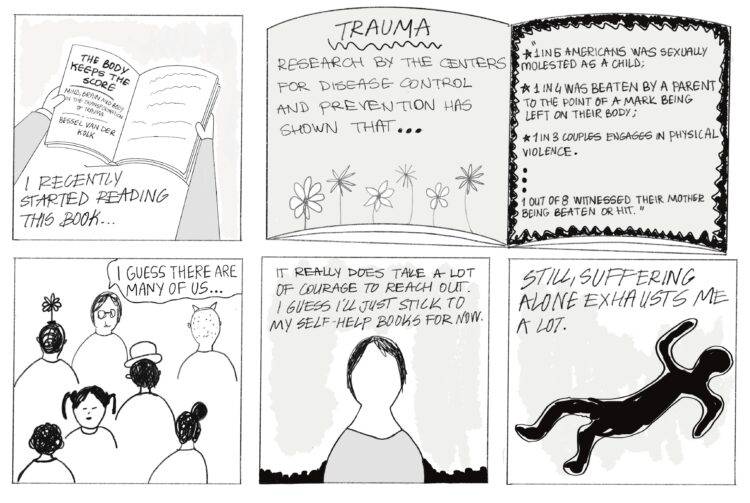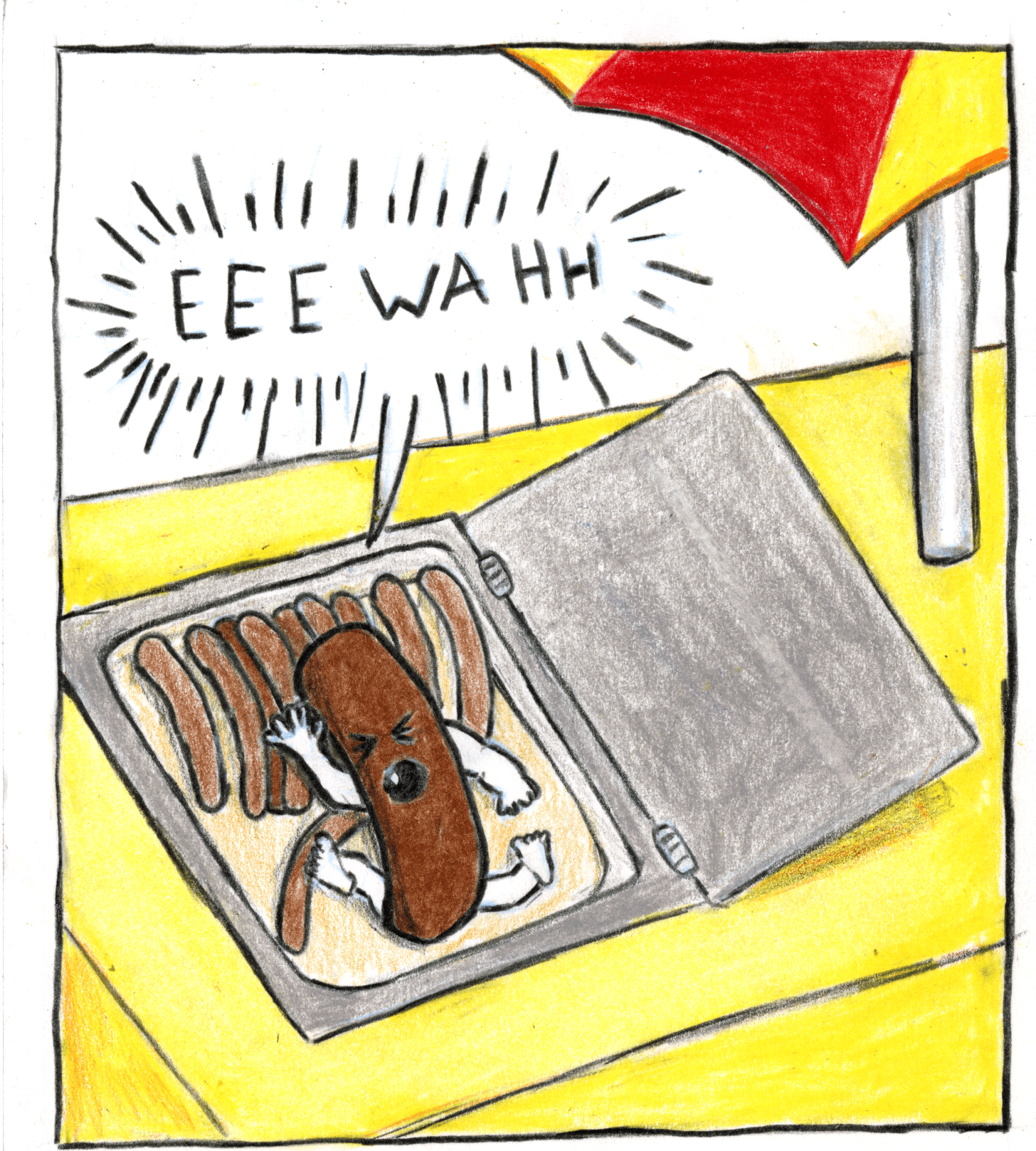Transcript:
Panel One: The narrator with only both arms and hands visible is holding a book open with both hands, with the left page of the book saying “The Body Keeps the Score, Mind, Brain, and Body in the Transformation of Trauma, Bessel van der Kolk.” The narrative is written in first person on the point of view of the person reading the book, the narrator. They start talking about their thoughts about the book saying, “I recently started reading this book…”
Panel Two: Panels two and three are joint together in the form of a book. Panel two represents the first page on the left and panel three shows page two on the right. The page is titled “Trauma” and the text below it says “Research by the Centers for Disease Control and Prevention has shown that…” The lower portion of the panel is decorated with 6 different flower sticking out from the lower page border.
Panel Three: This panel continues the sentence that began on panel two. Panel three reports statistics about sexual assault and domestic violence incidents to showcase how common they are among the US. These information also reveal how sexual violence is a common source of trauma. The panel has a border filled in black to emphasize the severity of the statistics.
The statistics are taken from the book. It says:
“1 in 5 Americans was sexually molested as a child;
1 in 4 was beaten by a parent to the point of a mark being left on their body;
1 in 3 couples engage in physical violence.
1 out of 8 witnessed their mother being beaten or hit.”
Panel Four: Reveals the face and the upper body of the narrator turned towards the viewer. They are situated alongside five other people whose backs are only visible, and a younger-looking individual who is looking towards the viewer. When combined, these people highlight how common these incidents are among people, through showing a variety of individuals with their own unique styles. The main subject says: “I guess there are many of us.” This is shown in a speech bubble on the upper right corner of the panel.
The narrator: A person with short dark hair wearing glasses, facing the viewer.
Person 1: A person with a flower sticking out of their head
Person 2: A person wearing cat ears
Person 3: A person wearing a light-colored hat
Person 4: A person with short curly hair
Person 5: A person with a messy bun on the upper right of their head
Person 6: A younger-looking person with high ponytails, facing the viewer.
Panel Five: The narrator is placed at the center of the panel. Their face is not visible, showing that reaching out is universal, and is something many people struggle with. They are wearing a gray shirt. They reflect on the idea of how hard it is to reach out and to get help because of the stigma by saying: “It really does take a lot of courage to reach out. I guess I’ll just stick to my self-help books for now,” feeling defeated.Panel Six: The subject is represented through a traced, black-filled dead body on the ground. They say “Still, suffering alone exhausts me a lot.” Even though the narrator thinks that they are content with healing only through reading their self-help books, they are still exhausted by themselves.








